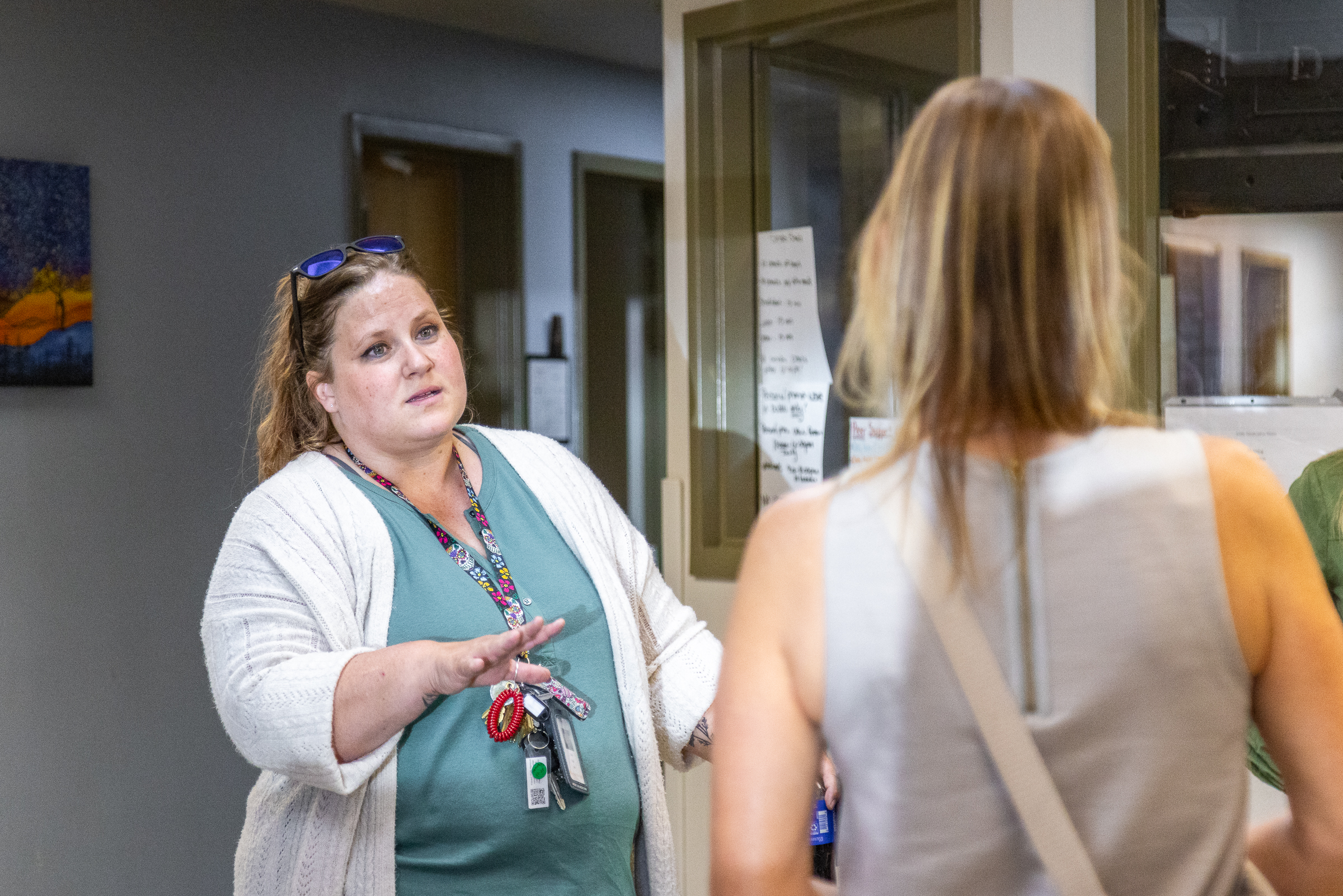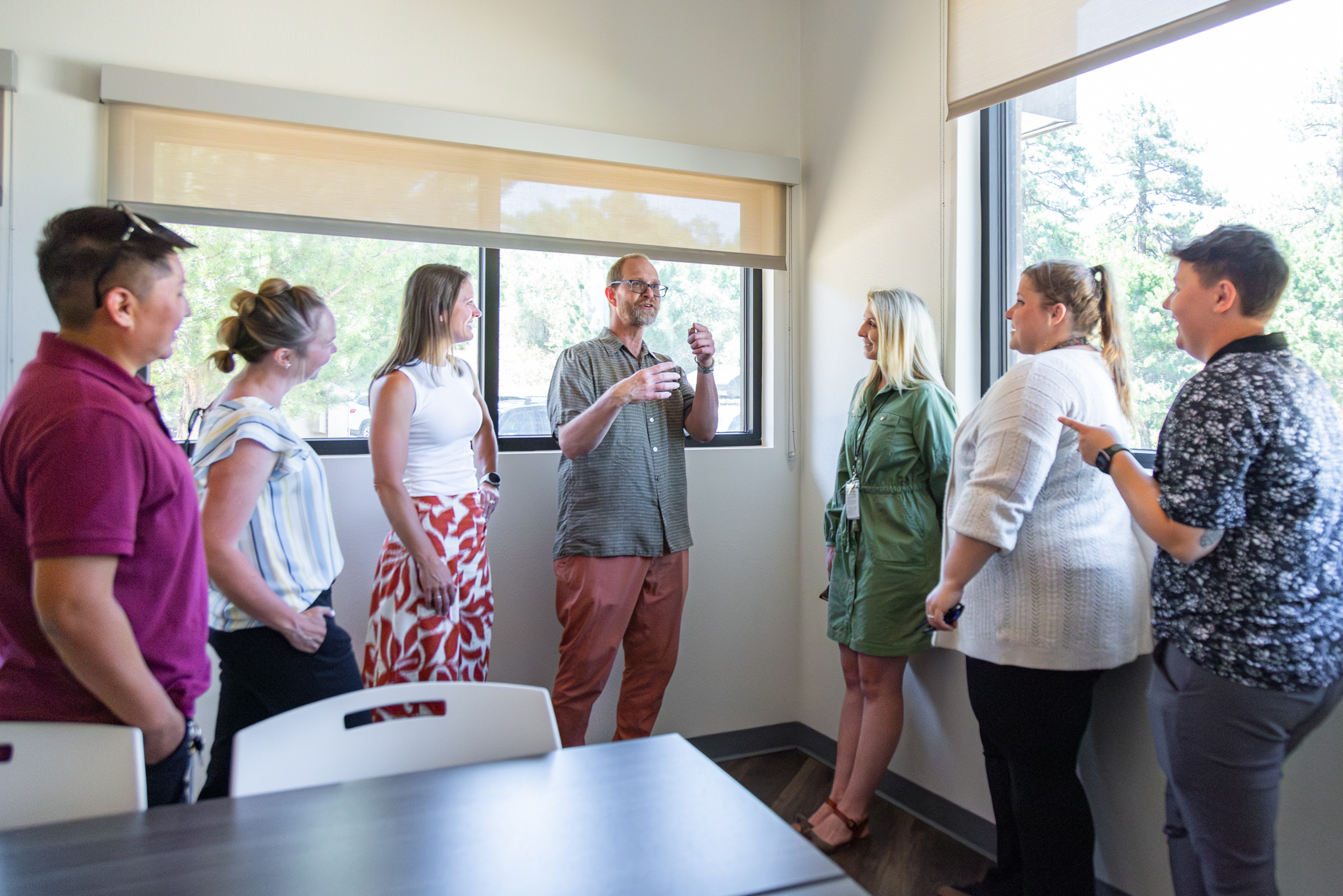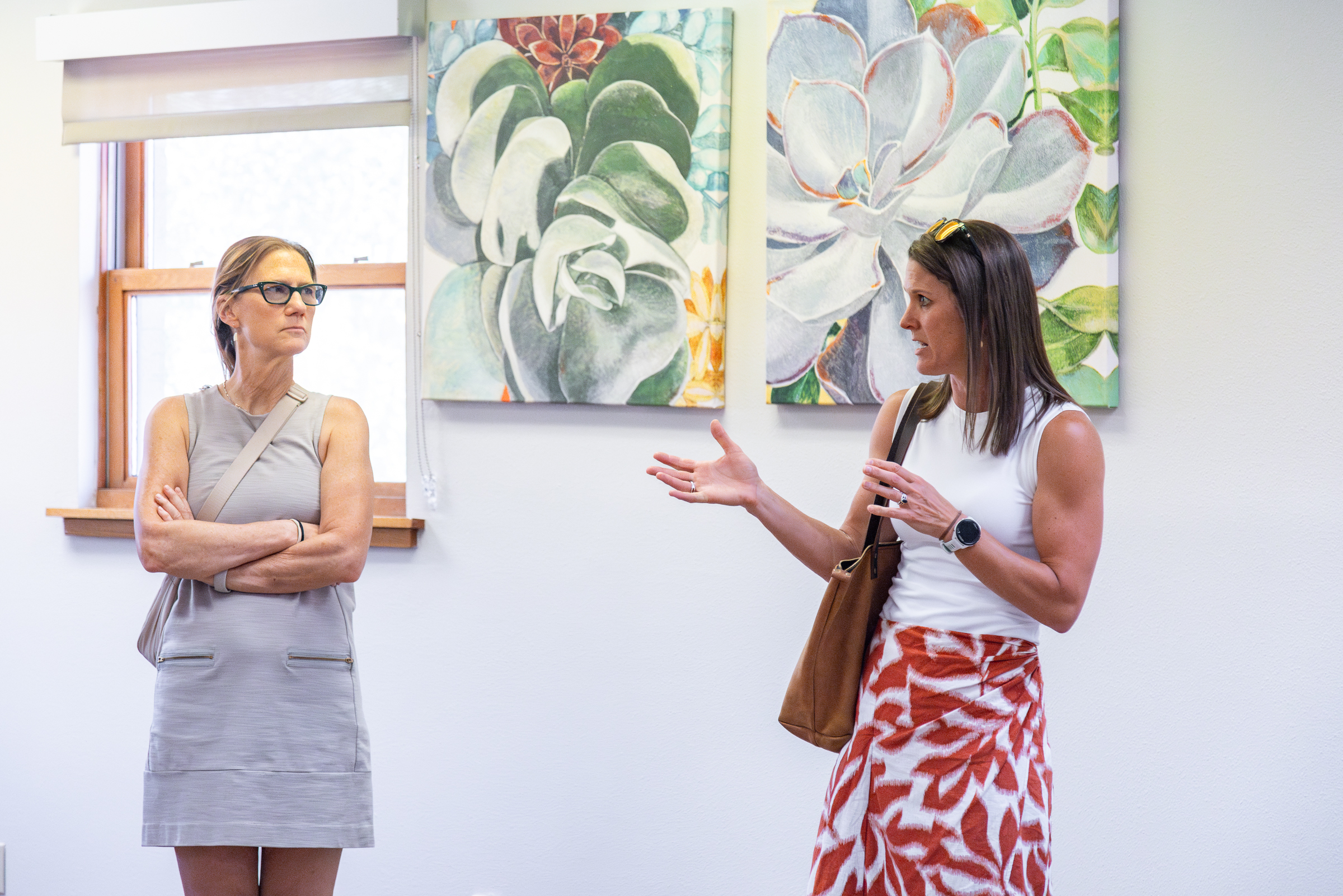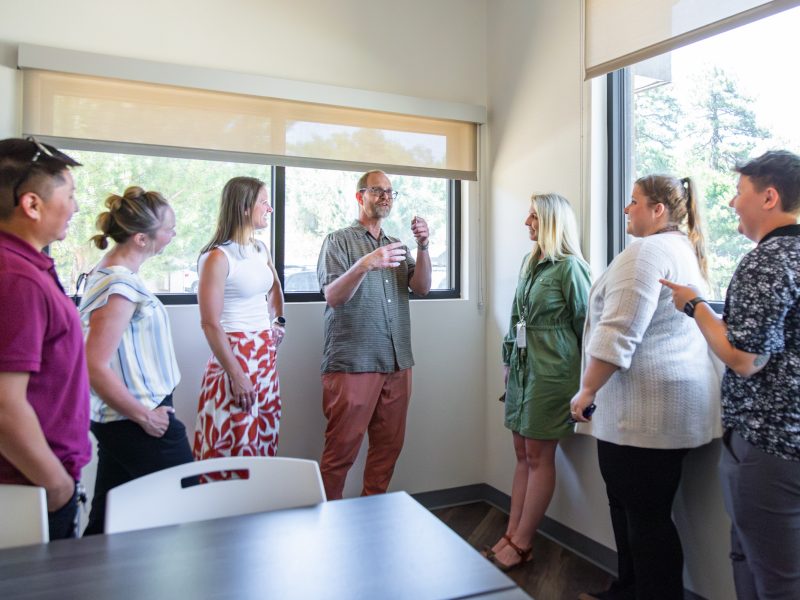Improving Mental and Physical Health in Rural and Culturally Diverse Populations: Music as a Therapeutic Intervention

Could making music be a resource to advance health and wellness outcomes? A team of NAU health equity researchers are ready to find out.
The COVID-19 pandemic has significantly impacted mental health, with one in six youth and one in five adults in Arizona experiencing a mental health disorder each year.1 In response, a team of researchers from Northern Arizona University (NAU) engaged with clinical professionals and Indigenous musicians to initiate a pilot project to evaluate the benefits of music-based interventions (MBIs) on mental and physical health.
This pilot study focuses on rural and culturally diverse populations in northern Arizona, specifically targeting Indigenous individuals participating in behavioral health programs at two northern Arizona rehabilitation facilities. This project is funded and supported by The NARBHA Institute, the NARBHA Institute James Wurgler MD Chair of Criminal Justice and Behavioral Health, and the Center for Health Equity Research.
Participants of the study include youth, young adults, and nursing home residents living in northern Arizona who will opt-in to the study and receive compensation for their participation.
The rhythm of recovery

This pilot study, conducted in collaboration with The Guidance Center (TGC) and Haven Health (HH), aims to design and implement a culturally tailored intervention employing therapeutic music.
The intervention will be developed with input from local Indigenous musicians, ensuring cultural relevance and effectiveness throughout the six-week music program.
Culturally centered music traditions and techniques
While the community partners provide services to all ages, races, and ethnicities, this pilot study aims to focus on Indigenous populations of northern Arizona. In doing so, the study team has engaged Indigenous musicians to bring cultural knowledge and traditions to the curriculum.
What to expect from the pilot study
- MBI Design: The project will create an MBI that is culturally and contextually appropriate for each community site: TGC and HH. This will involve focus groups and semi-structured interviews with staff and participants to tailor the intervention.
- Testing the MBI: A study with pre- and post-test measures will assess the feasibility, acceptability, and impact of the MBI. The project aims to see improvements in mental and physical health symptoms and enhancements in working memory, empathy, sense of belonging, social cohesion, self-esteem, and connection to community and culture.
Harmonizing health and music
The significance of this study lies in its potential to reduce mental and physical health symptoms through MBIs, especially those tailored to the participants and that engages participants with music.
Research has increasingly shown that the impact of music on mental and physical well-being is profound and multifaceted.
“Whether through listening, playing, or creating, music uniquely enhances emotional health, alleviates stress, boosts cognitive abilities, aids in physical rehabilitation, and strengthens social connections,” said Mommaerts, an Assistant Professor in the Department of Social Work and Principal Investigator on the project.
Recognizing these significant benefits, “my hope for this project is that music is seen as a therapeutic intervention that can improve overall health and quality of life.”
To achieve this goal, she and the project team will work closely with staff at TGC and HH in monitoring changes in participant behavior and health outcomes.
The project will address barriers to understanding the impact of MBIs among diverse populations and aim to improve scientific knowledge on the subject. This innovative approach includes a therapeutic music intervention, where participants actively engage in making music, rather than just listening to it.
Active vs. receptive music intervention
The study hopes to illuminate how actively participating in a music intervention by engaging with music can affect health outcomes for participants enrolled in a behavioral health program or nursing home facility.
The researchers plan to engage participants in drumming facilitated by a Native American musician to gain perspective on making music as a therapeutic intervention.
While previous studies have shown that listening to music is beneficial to the health and well-being of an individual, the researchers are exploring a gap in research on active music interventions and related health outcomes by including active participation in music.
A symphony of expertise

The study team is comprised of diverse expertise and experience, which are crucial for the successful implementation and evaluation of the MBIs. While the researchers come from differing backgrounds, two common factors exist among them: passion for music and commitment to health equity.
Katherine Mommaerts, Assistant Professor in the Department of Social Work and the project’s Principal Investigator, brings a robust background in community-based participatory research and youth participatory action research, combined with extensive experience in mental health treatment and deep connections within northern Arizona.
Co-Principal Investigator Ariel Roddy, an Indigenous feminist scholar and Assistant Professor in the Department of Criminology and Criminal Justice, contributes valuable insights through her training in Indigenous research methods and her experience in culturally relevant behavioral health interventions.

Research Assistant Craig Yarbrough offers more than 30 years of experience in music performance and bedside music therapy, enriching the project with practical therapeutic applications of music.
Rebecca Maniglia, Associate Professor in the Department of Criminology and Criminal Justice and a Co-Investigator, adds a unique perspective with her background in developing juvenile justice interventions and her work on using rap music for identity and character development in marginalized communities.
Julie Roddy, serving as a Co-Investigator and Research Mentor, enhances the project with her expertise in health economics, program evaluation, and cost-effective interventions, alongside her leadership experience within Native-based non-profit social service providers. Roddy is The NARBHA Institute James Wurgler, MD Chair of Criminal Justice and Behavioral Health at NAU.
Julie Baldwin, a Native Co-Investigator and Senior Research Mentor, brings substantial research experience and extensive leadership in grant and center management. Her focus on prevention and behavioral health research for Indigenous populations and diverse age groups, along with over 30 years of mentoring early-stage investigators, further solidifies the project’s foundation in health equity research. Baldwin is The NARBHA Institute Vice President for NAU Health and Executive Director of the Center for Health Equity Research.
This collective expertise ensures a comprehensive, culturally sensitive approach to addressing mental and physical health disparities through MBIs in northern Arizona’s rural and culturally diverse populations.
The healing power of music

“The impact of music on mental and physical well-being is profound and multifaceted. Whether through listening, playing, or creating, music uniquely enhances emotional health, alleviates stress, boosts cognitive abilities, aids in physical rehabilitation, and strengthens social connections,” said Mommaerts, Assistant Professor in the Department of Social Work and Principal Investigator on the project.
Recognizing these significant benefits, she adds “my hope for this project is that music is seen as a therapeutic intervention that can improve overall health and quality of life.”
To achieve this goal, she and the project team will work closely with staff at TGC and HH in monitoring changes in participant behavior and health outcomes.
Foundations for culturally appropriate interventions
The team hypothesizes that participants will experience significant improvements in mental and physical health outcomes, especially those who align with the traditional and cultural aspects of the curriculum.
Ariel Roddy, assistant professor in the Department of Criminology and Criminal Justice, is the Co-Principal Investigator on the project and hopes that the project will lay the groundwork for developing culturally appropriate MBIs that promote overall well-being in northern Arizona communities.
“We aim to observe improvements in the overall well-being of individuals whose needs extend beyond traditional clinical interventions through the implementation of music,” said A. Roddy. “My hope is that this study will pave the way for more innovative approaches within the medical field, particularly those that cater to Indigenous populations.”
A cornerstone of the work done through CHER follows the idea that culturally centered solutions in healthcare have stronger and more beneficial outcomes for those in minority groups.
“By demonstrating the efficacy of culturally relevant, non-clinical interventions, [A. Roddy] would like to inspire a broader acceptance and integration of such methods in mainstream healthcare.”
The team is hopeful that this curriculum can be developed as a template for providers to tailor to their patient demographics.
How will we know that the MBI curriculum is working?
At the end of the MBI pilot project, the study team will send a survey to the recruited participants to assess change in mental and physical health symptoms and short-term outcomes including working memory, empathy, sense of belonging, social cohesion, self-esteem, connection to community, and culture and coping skills.
Launching the pilot study
The team is working diligently on developing the MBI curriculum by weaving cutting-edge musical science, cultural/traditional knowledge, and behavioral health interventions into a comprehensive and culturally centered program.
They hope to learn how this comprehensive approach can benefit those facing behavioral health disparities and transfer their findings into robust MBI curriculum that can be easily reproduced and modified to meet specific population needs.
While this study has potential to impact all individuals, by integrating traditional music practices with therapeutic interventions, this pilot study seeks to enhance the mental and physical health of rural and culturally diverse populations.
“Music has incredible power to heal the heart, the soul, the body, and the mind of the listener. But why music holds such power is not clearly understood by science,” said Yarbrough.
“This research team is thrilled to have an opportunity to partner with TGC and HH and their highly qualified staff as we seek answers to this question in order to positively impact the lives of those from communities in Northern Arizona.
- “Mental Health in Arizona.” National Alliance on Mental Illness, www.nami.org/NAMI/media/NAMI-Media/StateFactSheets/ArizonaStateFactSheet.pdf. Accessed 5 Jan. 2024.
